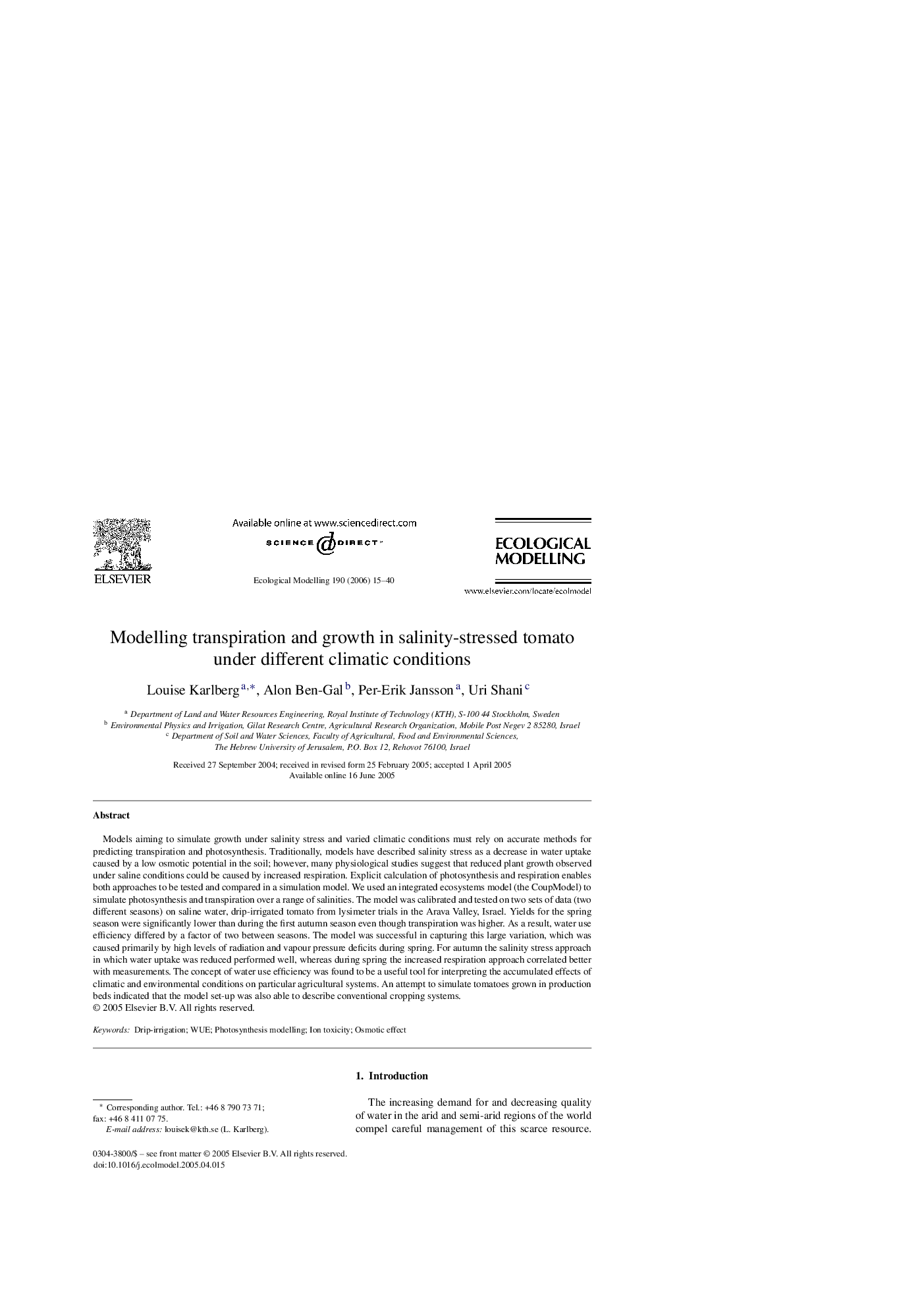| Article ID | Journal | Published Year | Pages | File Type |
|---|---|---|---|---|
| 4379398 | Ecological Modelling | 2006 | 26 Pages |
Models aiming to simulate growth under salinity stress and varied climatic conditions must rely on accurate methods for predicting transpiration and photosynthesis. Traditionally, models have described salinity stress as a decrease in water uptake caused by a low osmotic potential in the soil; however, many physiological studies suggest that reduced plant growth observed under saline conditions could be caused by increased respiration. Explicit calculation of photosynthesis and respiration enables both approaches to be tested and compared in a simulation model. We used an integrated ecosystems model (the CoupModel) to simulate photosynthesis and transpiration over a range of salinities. The model was calibrated and tested on two sets of data (two different seasons) on saline water, drip-irrigated tomato from lysimeter trials in the Arava Valley, Israel. Yields for the spring season were significantly lower than during the first autumn season even though transpiration was higher. As a result, water use efficiency differed by a factor of two between seasons. The model was successful in capturing this large variation, which was caused primarily by high levels of radiation and vapour pressure deficits during spring. For autumn the salinity stress approach in which water uptake was reduced performed well, whereas during spring the increased respiration approach correlated better with measurements. The concept of water use efficiency was found to be a useful tool for interpreting the accumulated effects of climatic and environmental conditions on particular agricultural systems. An attempt to simulate tomatoes grown in production beds indicated that the model set-up was also able to describe conventional cropping systems.
